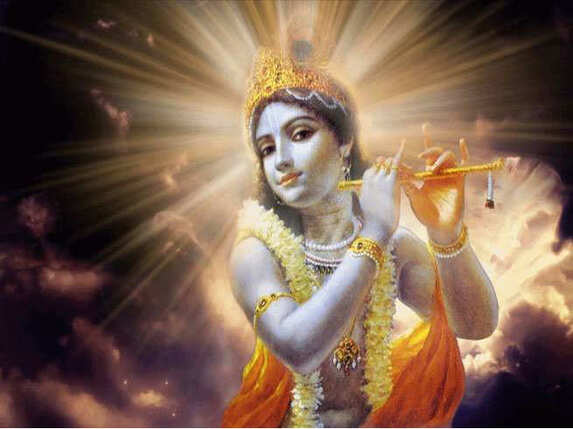|
In Hinduism, the Vedanta of the Upanishads mainly preaches the doctrine of the Absolute Being, the non-dual Brahman, about God. “Ekam Sat Vipra Bahudha Vadanti” (एकम सत विप्रा बहुधा वदन्ति), the Sutra quote can be traced to the Rigveda and the Upanishads. It literally means “Truth is one, the wise perceive it differently” or God is one, the enlightened or the wise, call him by different names or perceive him differently. God is self-evident, impersonal, omniscient, the Knower and Master of nature, the God of all. He is behind all worship.
What is Brahman: Brahman is Supreme God and not “one of the four castes i.e. Brahmin which is popular in common parlance”. He is the highest Supreme Being or the God. The word Brahman is derived from the root word "brah" meaning to expand. It is a reference to his infinite power, infinite dimensions, and endless manifestations. The Brahman therefore has been classified into two categories as under:
Other Nomenclature of Brahman: In addition to the term Brahman, God is also addressed and referred to as 'Paramatman', 'Purusha', 'Ishvara', 'Bhagavan', Narayana and the like. As it was found that the popular mind could not grasp the too lofty concept of the Upanishads, The theology of the Puranas mainly revolve around the Trinity - Vishnu, Brahma and Shiva - as also the incarnations of Vishnu and the Shakti’s of the Trinity - Lakshmi, Sarasvati and Durga - and the two sons of Shiva. The Puranas amplified the religious aspect of adoration of God. Attributes of Brahman: Vedas and the Upanishads speak of four aspects (Padas) of the Supreme Being viz. Avidya pada (Ignorance Aspect), Vidya pada (Knowledge Aspect), Ananda Pada (Bliss Aspect) and Turiya pada (Transcendent Aspect). The Brahman is all inclusive and all absorbing, and described as Sat-Chit-Ananda (Existence-Knowledge-Bliss) and Satyam, Jnanam, Anantam (Truth, Consciousness and Infinite). Narayana name indicates that He possesses six glorious powers as described in Vishnu Purana. These powers are as under: a) Aishvarya – it is Sovereignty i.e. unchallenged rule over all. b) Jnana – It is the Power to know about all beings of all times simultaneously. c) Bala – It is the strength or capacity to support everything by His will and without any fatigue. d) Virya – It is the power to retain the immateriality as the supreme spirit in spite of being the material cause of mutable creations. e) Shakti – It is the capacity to make the impossible possible. f) Tejas – the splendor which expresses His self-sufficiency and capacity to overpower everything by His spiritual effulgence. Creative Power of Brahman: When Prakriti and the Jivas go into latency during Parlaya (dissolution) in their substratum, the Supreme Being or Brahman is described as causal or Karana-Brahman. When they come into manifest condition Brahman is called Effect Brahman or Karya Brahman. Prakriti and the Jivas always form an organic whole with Him in all states. Creative Process of Brahman: The purpose of creative process is the fructification of karma of Jivas who are countless in number. Their essential nature of consciousness and bliss is covered up by the mist of Avidya (ignorance). They attain to higher and higher evolution through the attainment of better and better body-minds suited for the adoration of the divine until they finally obtain liberation through the grace of God. The creative aids this bestowal of grace in Jivas and their release from Samsara. Manifestations of Brahman: According to the Sri Vaishnava doctrine, The Supreme Being manifests mainly in four forms as under:
Supreme Being has several other forms of His creative manifestation for meditative purpose as under:
These are of three types as under:
But Sri Madhvaharya holds that there is no difference between these incarnations. They are all His Svarupamasas or expression of His entire nature. Reference: Bhakti Schools of Vedanta – by Swami Tapasyananda, Sri Ramakrishna Math, Chennai.
0 Comments
|
Archives
May 2024
Categories |

 RSS Feed
RSS Feed